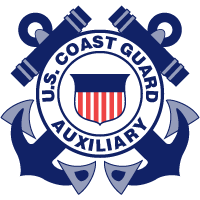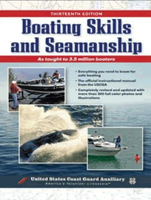 A year ago April, I attended a “Boating Sills and Seamanship” series of classes. You see, I live in a “nanny state” that requires the operator of any power boat to take at least 16 hours of boating safety instruction. (Now, if they would only do that for auto drivers #$%! They drive like idiots here. No, I don’t live in Massachusetts.) Back to boating safety… In reality, it’s not a bad idea and the courses likely save lives. I found it surprising to learn that most boating deaths occur to people who know how to swim, who meet their end in calm waters (not huge storms at sea), and who are not wearing life vests.
A year ago April, I attended a “Boating Sills and Seamanship” series of classes. You see, I live in a “nanny state” that requires the operator of any power boat to take at least 16 hours of boating safety instruction. (Now, if they would only do that for auto drivers #$%! They drive like idiots here. No, I don’t live in Massachusetts.) Back to boating safety… In reality, it’s not a bad idea and the courses likely save lives. I found it surprising to learn that most boating deaths occur to people who know how to swim, who meet their end in calm waters (not huge storms at sea), and who are not wearing life vests.
 I have no intentions of operating a power boat in this state, and the safety course isn’t required for boats that are rowed or sailed. Yet, I took it because I’m a novice boating enthusiast and thought it might be interesting. The course filled my head with a lot of things I’ll likely never need for operating a canoe on a rather small inland lake, such as “red light returning” and all the details of navigation markers, and how to use NOAA charts and plot courses. I found it interesting to learn about many aspects of boat handling, on the water navigation, “Colregs” and the rest of the rules of the road, erm, water. In the end, the two bits of information I use most today is how to tie a bowline knot (blindfolded and behind my back) and that when in doubt about right-of-way, the bigger boat usually wins, right or not.
I have no intentions of operating a power boat in this state, and the safety course isn’t required for boats that are rowed or sailed. Yet, I took it because I’m a novice boating enthusiast and thought it might be interesting. The course filled my head with a lot of things I’ll likely never need for operating a canoe on a rather small inland lake, such as “red light returning” and all the details of navigation markers, and how to use NOAA charts and plot courses. I found it interesting to learn about many aspects of boat handling, on the water navigation, “Colregs” and the rest of the rules of the road, erm, water. In the end, the two bits of information I use most today is how to tie a bowline knot (blindfolded and behind my back) and that when in doubt about right-of-way, the bigger boat usually wins, right or not.
 The real point of this posting is to talk a bit about the guys who teach these courses. They are Coast Guard Auxiliary members. The Auxiliary is made up of unpaid volunteers, people who do this work because they love it. The fellow who taught most of my course was, if I recall correctly, an electronics specialist at some industry around here by day (or, was it a home building contractor?), and a CG Auxiliary patrol officer on weekends. The CG Auxiliary patrols coastal waters and inland waterways that span states. A large lake not far from here lies partly in this nanny state and partly in the nanny state to the south of us. It is large enough to need CG patrols. Those guys are out there, not for any form of law enforcement, but for recreational boating safety and distress assistance. The CG Auxiliary guys are unpaid. They buy their own uniforms and gear. If they use their own boats for patrol work, their only compensation is fuel. They cover all the rest of the costs. That, my friend is enthusiasm, passion, and commitment. These guys do it because they love it; it’s not just a job. By the way, I say guys (plural) because over the course of several weeks there were three different people handling various segments of the course. They were uniformly interested, and interesting.
The real point of this posting is to talk a bit about the guys who teach these courses. They are Coast Guard Auxiliary members. The Auxiliary is made up of unpaid volunteers, people who do this work because they love it. The fellow who taught most of my course was, if I recall correctly, an electronics specialist at some industry around here by day (or, was it a home building contractor?), and a CG Auxiliary patrol officer on weekends. The CG Auxiliary patrols coastal waters and inland waterways that span states. A large lake not far from here lies partly in this nanny state and partly in the nanny state to the south of us. It is large enough to need CG patrols. Those guys are out there, not for any form of law enforcement, but for recreational boating safety and distress assistance. The CG Auxiliary guys are unpaid. They buy their own uniforms and gear. If they use their own boats for patrol work, their only compensation is fuel. They cover all the rest of the costs. That, my friend is enthusiasm, passion, and commitment. These guys do it because they love it; it’s not just a job. By the way, I say guys (plural) because over the course of several weeks there were three different people handling various segments of the course. They were uniformly interested, and interesting.
If you have ever wondered about taking a boating safety course, I advise you to jump in and go. It will cost you very little money and only a few evenings time. Courses are often held at high schools which offer adult education, and the fees are minimal. If you need one of these courses and want it in a hurry, there are one day 8 hour versions that satisfy some of the nanny states. I found it time well spent. Highly recommended. To locate a class near you, use the CG’s Class Finder.
Oh yeah, and why do I write about it today, 17 months later? Well, when we parted back in April of 08, Jeff said “Your completion certificates will be slow in coming. They go through a couple of different agencies which are operated by full time salaried bureaucrats, not by volunteers.” My certificate (plastic wallet card) arrived today. I had a good chuckle as I found it in the mail and remembered Jeff’s warning. To celebrate, I took it with me for this afternoon’s paddle on Lake Sebago. … where there were no boating accidents today.
Many people think because they can swim they are safe if they have an accident in the water. But you can’t swim if you’ve been knocked out and that’s where wearing a life jacket can save your life.